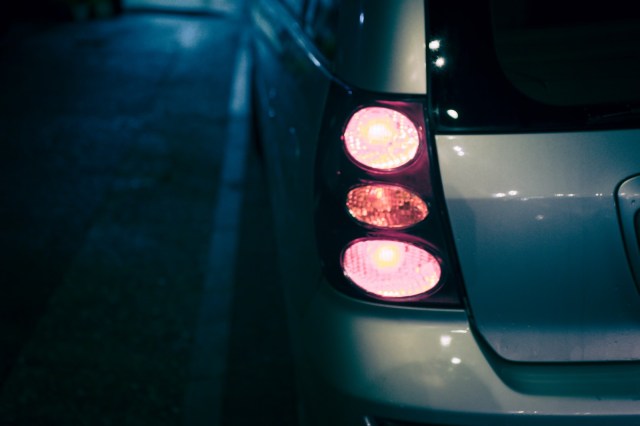
All bad things must come to an end.
Previously on “Getting a driver’s license in Japan the hard way”, I had managed to pass the second and much more difficult written test leaving me with only one more examination to clear. This time I would have to take a road test on the city streets.
● The Road Test
The road test involves driving along a pre-determined route through the streets around the testing center while demonstrating safe techniques and general driving competence. Afterward, on the closed testing course, examinees must then either perform parallel parking or a variation of a three-point turn that involves backing into a space similar to a parking space and then immediately pulling out in the opposite direction.
The routes generally take about 20 minutes to drive through each and the maps are displayed in the waiting lounge of the testing center. As I mentioned last time, before taking this test, you are expected to do 20 hours of driving practice, so doing it on these courses is very highly recommended to get a good feel for them.
Regardless of the route, there are intentionally tricky areas that they all pretty much go through, such as tight corners and narrow roads with utility poles or other obstacles to safely move around. What these challenges are will depend highly on the area you test in, so the only way to be sure is to drive through the routes yourself and find them.
For example, in the Kadoma route in Osaka Prefecture, there’s one sharp corner with a stone that you have to clear tightly without crossing over into on-coming traffic.
And on some routes there seem to be poles planted right in the lane making it a tight squeeze for two vehicles to pass by each other.
● The Off-Road Part of the Road Test
Despite these issues, I felt pretty confident after practicing the routes repeatedly. The main problem was the part that takes place on the closed course. I wasn’t able to practice them with a car, but the testing centers are usually open at certain times of the day for people to walk through and get a feel for it.
I did that a few times, but unfortunately I still couldn’t experience it in an actual car. Doing that would require renting time on the course for 3,000 yen (US$22) per 50 minutes, which isn’t bad but since I only had a learner’s permit, it would also require considerable patience and flexibility on someone else’s part to come with me and let me use their car at whatever time I could get a reservation for. By the way, borrowing a car is pretty much the only option for this part, unless you hire a personal driving instructor. Most, if not all, car rental agencies in Japan do not allow people with learner’s permits to drive their vehicles, even if they’re rented in a licensed driver’s name and said licensed driver is in the car with the learner’s permit-holder.
It is possible to practice in parking lots and such, but if you look closely the dimensions of the closed course are rather unique. The space for backing into is a little bit wider than the average Japanese parking spot, which by the way is quite narrow.
▼ Scroll the map down to compare with a regular parking space
However, the lane that you have to enter from is very narrow, and that’s where you can run into problems.
▼ This video shows the pitfalls of such a setup very well
These spots are surrounded by dangling bars that make a rattling sound if you bump into them even slightly, but they can also be used as a visual reference to help you keep your bearings. For example, when you back in here, your body should be aligned around the fourth yellow bar or grey support bar, but this may vary on other courses.
It wasn’t ideal, but I felt I practiced as much as I could to have a fair shot of passing this test. Of course, my repeated past failures made sure that I wasn’t too optimistic. At least I had a good month of validity on my learner’s permit to get a failure or two under my belt. That way even if I totally screwed up the closed course part, the experience alone would still help me greatly the next time around.
● Test Day
Check-in for the test was slated for 8:30 a.m. but there was a course-walk from 7 a.m. so I left home at dawn and biked 10 kilometers (six miles) to the police testing center to ensure that I had prepared as much as I possibly could for this thing.
Now, if you read the last installment and remember my setback with forgetting to bring enough money for the written test, hopefully you’ve come to the conclusion that I’m a little absent-minded and won’t be too surprised by what happens next…
After getting as much spatial awareness of the closed course section as possible from 7 to 8, I watched the test introduction video in the lounge for about the 30th time. While sitting there I decided to look into my bag to make sure all my money and documents were in order and that is when I made the nightmarish discovery that I had forgotten my learner’s permit.
Panicking, I tried to assess my situation, first I checked all my paper documentation, and online too, to confirm that the paper copy of my learner’s permit was really needed for this test. After all, wouldn’t the fact that I’m registered to take it be proof enough that I had one?
After realizing that I did in fact need the card, I tried to come up with a way to get home and then back to the test center by the absolute latest time that I could check-in, which was around 8:45. It was about 8:10 at this point. Biking was totally out of the question and even the nearest train station was too far of a hike to make it. There are usually taxis waiting in front of the test center, but it was too early in the morning and there was not a single cab in sight.
I was totally screwed, and there was nothing I could do but check in without a permit and see what my fate was. When I approached at the counter I showed the man my reservation slip and added, “…but I forgot my learner’s permit.”
“Oh, well you can’t take the test,” he said both gently and matter-of-factly.
“I know,” I responded in a similar fashion.
Generally, if you don’t show up or cancel at the last minute, you forfeit your payment and have to pay again for a retest. This was completely all my fault and they had me totally dead to rights, so I assumed I would have to pay up. However, my situation didn’t seem to warrant that, and I was luckily able to reschedule without paying anything. That was the good news.
The bad news was that the soonest I could reschedule was 19 July…and my learner’s permit expired on 23 July. This meant that I most likely had only one chance to do this right.
● Facing Reality
My entire nine months of studying and testing and failing all suddenly hinged on this single test that I had never taken before, and my anxiety was taken to its limits. I got in as much additional driving practice as I could, but I still was unable to try that parking section, leaving it an irritatingly unknown variable.
I also took this extra time to really look deep into an issue that I think everyone has with this particular test. In many parts of Japan the streets are very old and not well designed, so driving along them often means sharing asphalt in very close proximity to pedestrians, cyclists, and parked vehicles.
Like in most countries, these roads are often divided by some configuration of white or yellow dotted or solid lines. In Japan a yellow line divides two lanes of opposite moving traffic and prohibits entering into the other lane in order to overtake something. But an interesting reason for the yellow solid line is that two-lane roads separated by one are theoretically supposed to have lanes wider than six meters.
This is because that should give a car enough space to pass a parked vehicle while also allowing for over one meter (three feet) of clearance in the case that the parked car’s door might suddenly open. This should also give plenty of room for the clearance required of pedestrians an cyclists, which is one meter if they are aware of your presence and one and a half meters (five feet) if they aren’t.
That’s all great in theory, but theory doesn’t mean squat here. During my practice runs, I found that some roads divided by yellow lines didn’t have lanes anywhere close to six meters wide. One time I also encountered two old ladies slowly riding side by side on bicycles and taking up the entire lane that had a yellow line. They either didn’t notice or didn’t care that I was driving right behind them. Normally, I could honk my horn at them, but in Japan that is a violation known as “abuse of the horn,” and definitely not advisable during a test.
Another time I came across a vehicle parked on a crosswalk, which they are not supposed to do, but finding cars, cyclists, and pedestrians doing what they’re not supposed is certainly not uncommon and thus a very realistic risk during a road test. The problem this presents is that you’re technically never supposed to overtake anything at a crosswalk, meaning it would be a violation to drive past this parked car under any situation.
Of course, in real life you’d just drive around it carefully and no one would care, but having gotten this far in the testing process I know all too well that even slight infractions can send you packing. These two instances would force you to make a deliberate moving violation, or just sit there waiting for them to move thus obstructing traffic which is also a violation. So, what was I supposed to do?!
I searched far and wide on the Internet through blogs and YouTube videos but couldn’t find a concrete answer from a reliable source to this dilemma. There were only mixed opinions saying either that you must never cross the yellow line or overtake at a crosswalk during the test, or that it’s OK to cross a little in certain situations. This amounted to no help at all, so in the end, I figured I would just have to play it by ear should such a problem arise.
● Test Day for Real This Time
The 19th arrived, but I found myself in a strange state of calm as I went to the testing center. I don’t really know why because only the night before I had been a complete nervous wreck. I guess just knowing that one way or another this would all be over soon gave me some sense of relief.
▼ It was slightly drizzling that morning
As I mentioned during the first driving test, there’s a trick to waiting in the check-in line. You want to hang back a bit so as not to take the test first. The reason for this is that during the test the next person in line gets to ride in the back seat and scope things out while the other person takes the test. This would give me a much better perspective of the parking area so I did the line trick and got a comfy place in the testing queue.
However, on this day they decided to run two cars which put me right back at first in line for the second car. Even despite this setback I was still strangely calm. I guess after months of disappointing surprises I kind of grew numb to them. Not only that, but since this was a road test I felt a lot more in my element than on the closed course. There I had to imagine cars, bikes, or people and react as if these figments of my imagination would suddenly jump out even in areas of complete visibility.
▼ I once got penalized for not turning my head left and right while going through an intersection that looked a lot like this.
However, on an actual road these dangers are very much real and it was second-nature to keep an eye out for them. I don’t mean to brag, but I really nailed this part of the test. I felt so at-home behind the wheel along these streets I had driven many times before that I was in an almost Zen-like state.
At one point at a stop light I left a space open so that trucks could pull out of a company’s lot. However, because another truck was stopped in front of me their visibility was limited so I started waving them through when there was no oncoming traffic. One of the truckers started laughing at me when I did it, which I though was strange until I remembered that I was sitting next to a uniformed police officer at the time.
Most of the course went without a hitch. There were some bikes and parked cars along the way, but I had more than enough room to give them the necessary clearance while staying within the lines. Also, at that turn with the stone I mentioned at the beginning, I had the crap luck that another car stopped way past the stopping line, making my turn even tighter than normal.
Even that didn’t faze me at all and I uttered a little “That’s dangerous…” scolding the driver, which of course was purely for the benefit of the cop who was evaluating me.
At about three points along the course I was also required to pull to the side of the road and stop for a moment. The trick here is not to stop in an prohibited area such as within five meters of a crosswalk or three meters of a building entrance, while also remembering things like applying the parking brake and putting on the hazard lights.
That too was smooth sailing and everything seemed to have gone perfectly…right…until…I entered the closed course again.
● Choking at its Finest
At this testing center the choice between performing parallel parking or the three-point reverse turn depends on the course that the officer assigns to you. In my case I had to do the three point turn.
Despite all the virtual and theoretical practicing I did, this was still uncharted territory and had the potential to completely wipe out all the good I had done so far in one fell swoop. You might recall from my past attempts that even brushing up against the curb slightly with a wheel results in an immediate and automatic failure.
I pulled into the lane and turned my head to visually confirm that nothing was in the obviously empty spot, as one must do during the test. I then pulled past it, preparing to back in. The lane felt even narrower than I imagined and all the anxiety and panic came rushing back in.
As I tried to reverse, I felt like my front right wheel was getting too close to the curb so I widened my approach. However, that was a huge misstep and as a result I ended up like this…
Clearly I was not getting in. However, in this portion of the test you are given up to three corrective maneuvers, meaning you can put the car back into drive and straighten it out. Doing it once will result in no penalties, a second and third time will see rather large deduction in points each, but doing it a fourth time means you’re toast.
In my particular situation, my first attempt was pretty much a complete wash. I asked the cop if I could do it again from the start, but he simply said he wasn’t allowed to give advice and I’d have to use my own judgement. So I started again with one redo and no progress at all.
I hit the reverse a little better this time, but it still felt a little off. The area is so tight that you really have to have a good sense of the dimensions of both the car and asphalt, but this was my very first time in both this car and and on this piece of road so I was pretty shaky.
I decided to use up another redo just to make sure I could clear the curb and entered the space, that would cost me points, but it was better than failing right then and there. The next step was to exit, but I was still in a bad position. I would have to pull out to the right but I was really close to the curb so the angle looked impossibly sharp.
I tried to crank it as much as possible, but it looked as if my front left wheel was going to hit the curb. This left me with a very hard decision. If I were to take a third redo the point deduction would be pretty severe, but if I hit the curb I was automatically out. I figured it wouldn’t hurt to ask the officer, but he just repeated his mantra of not interfering with my judgement.
Finally, I decided to take the redo and at least see where the chips fell at the end of the test rather than risk getting the boot right then and there. I backed up, straightened out, and then drove back to the motor pool to hear my judgement.
It was a stellar performance followed by an utterly abysmal performance, so even up to the last minute my fate was completely uncertain. It was so nerve-racking than when the officer finally told me I passed I think I might have teared up a bit. I don’t think it was so much because I passed, but because nine months of enduring the failure and stress of this process was finally at an end.
● Letting It Soak In
It was such a climactic ending that as I sat in the waiting room, even I started to doubt it. I wondered if maybe the cop knew my situation and fudged the score a bit to let me through. However, those thoughts were quickly dispelled when I sat in on another person’s test.
As I mentioned, the examinee next in line will sit in the rear seat of the car during the previous person’s test. This person is meant to serve as a prop, because the driver is scored on whether they check that the passenger enters and exits the car safely and wears their seatbelt. However, the last person to take the test also needs the prop rider, so the officer will usually ask someone who passed to sit in since they have to wait until everyone is finished anyway.
I don’t mean to be rude, but watching this guy really helped me put my own performance into perspective. He didn’t come to complete stops at stop signs, forgot to signal, and waited too long to turn at times, but his biggest fault by far was that any time he encountered anything on the side of the road, even a car that was parked on way off to the side on private property, he would slow down to an almost complete stop, wait for oncoming traffic and signal a lane change (① in the picture below), then change lanes clear across yellow lines (②) and signal back into the original lane once the car was passed (③).
▼ How NOT to drive past an empty parked car that’s not on the road
The most interesting part was that he did this a few times before the officer finally told him that the test was finished and he had to go back.
The first reason this was interesting is that I could see that examinees were given a fair bit of leeway on the road test, and the second is that in the event of a major obstacle during the test crossing the yellow line would seem to be tolerated at least once, because this guy did it a few times even without an obstacle. I could really sympathize with him there though, because I wasn’t sure what to do about that aspect of the test either.
Anyway, at least I had passed on this day and it felt like a tremendous weight had lifted off me. At this point in the story you might expect me to walk out of the police testing center, full driver’s license in hand, and raising my fist in defiant victory like Judd Nelson at the end of The Breakfast Club…but no.
● It Ain’t Over Yet!
Passing the fourth and final test at the police driving center like I did doesn’t grant you a license right then and there. Before anyone using this method is issued one, they must first take two courses at a driving school in first aid and general driving safety. Although there are technically two courses, they’re actually made up of a bunch of lessons that’re all usually offered in a single one-day course lasting about eight hours.
After passing the test, the police gave me a list of approved driving schools that offer these courses and I was to choose one to make a reservation at. After completing the courses I would be given certificates that that I must bring back to the police and then be issued a driver’s license.
▼ In my case there were about a dozen schools to choose from
How soon you can get a reservation at a school varies quite a bit from place to place from a few days to a month ahead. Part of the courses also involves driving practice which can be a problem depending whether or not your learner’s permit is about to expire. In my case it was set to expire in a few days so I had to get an extension on it which cost about 4,000 yen ($29). As a general rule you cannot get extensions on a learner’s permit except in this case where you’re unable to get a school reservation in time (there were also some COVID-19 exceptions, but those are pretty much finished now).
I couldn’t get a reservation until about a month later, but that had more to do with my own lack of free time and the Obon holidays. The driving school itself was almost like a vacation compared to the stress and anxiety of everything before. I got to watch a TOEI-produced movie about drunk driving, hook up an AED to a dummy, and even drove in one of those simulator rigs.
▼ The one I used was very similar to the one in this video
This was also by far the most expensive step in the process, setting me back 15,400 yen ($113) for the day. At the end they give you a pair of certificates that you can take back to the testing center as early as the next day.
That’s just what I did and after about three hours of waiting and getting my photo taken, I was finally presented with my license to drive.
● Was It Worth It?
Having gotten a small taste of the driving school experience, I can say that it’s by far the better option if you have the means. But for me at least, the point of attempting it the harder and more direct way was to avoid the steep 200,000 or 300,000 yen fee ($1,400 to $2,200) to attend such a place.
So how much did I save in the end? Let’s crunch the numbers!
First written test: 2,900 yen
First driving test (car usage fee): 1,450 yen
First driving test again (test + car usage fee): 4,350 yen
First driving test again (test + car usage fee): 4,350 yen
First driving test again (test + car usage fee): 4,350 yen
Learner’s permit issuing fee: 1,150 yen
Second written test: 2,550 yen
Second written test again: 2,550 yen
Second driving test (car usage fee): 800 yen
Learner’s permit extension fee: 4,000 yen (rough figure)
First aid course: 4,200 yen
Normal driving course: 11,200 yen
Driver’s license issuing fee: 2,050 yen
TOTAL: 45,900 yen ($336)
It’s considerably less, but still a fair chunk of money. There were also related costs like photos, government documents, and magnet signs that you need to attach to whatever car you’re driving. The green and yellow marks that fully licensed drivers have to use in their first year can be found at places like auto parts stores or home improvement centers for about 400 yen ($3) a piece, but the larger “IN TRAINING” signs that drivers with learner’s permits must use are a little harder to come by. I found a decent pair on Amazon for about 1,000 yen ($7).
▼ The sign for drivers with learner’s permits (left) and the mark for driver’s with a license for less that one year (right)
All that might push the total cost up a bit but it’s probably still under 50,000 yen in the end. Looking at the rundown you can see that it is possible to chisel that figure down even further with some better timing and not failing so much. However, when planning to get a license this way, you really should allot time and money for failure. It is possible to pass on first attempts but very rare.
The only way to pass on your first attempt is to take absolutely nothing for granted, know absolutely everything, and do absolutely everything to the T on tests without an ounce of ambiguity or error. That is crucial and the hard part for me wasn’t as much doing it as it was realizing just how much was involved in doing it.
In the first part of this series I recommended a book made by the Japan Automobile Federation that’s available in many languages and at the time said that while good it didn’t quite cover everything on the test.
I realize now that I was too quick to judge. It actually was very extensive, but I had glossed over asterisks, fine print, and certain sections on the very misguided notion that I probably wouldn’t need it for the test. The reality is YOU NEED TO KNOW EVERYTHING WITH NO EXCEPTIONS. This includes small and arcane things that most licensed driver’s in Japan do not know and never do, many of which I mentioned in past articles.
▼ In my personal experience I was not asked about what to do in the event of an armed attack, but I absolutely would not put it past them bringing it up on a test. I’m being dead serious about that.
It took a lot of failure for me to realize that very important point but if you can know that and really appreciate it from the start, then your chances of passing sooner will improve. There are a lot of other details too, and even after all these long articles, I feel like I only covered about 10 percent of what I went through. If anyone has any specific questions about the entire process, leave them in the comments below and I’ll do my best to answer them in a follow-up article.
Now, if I only had a car…
Top image: Pakutaso
Insert images: ©SoraNews24
● Want to hear about SoraNews24’s latest articles as soon as they’re published? Follow us on Facebook and Twitter!
Getting a Driver’s License in Japan the Hard Way
Part 1 – The written test
Part 2 – The first driving test
Part 3 – The first driving test again
Part 4 – The first driving test a few more times
Part 5 – The second written test

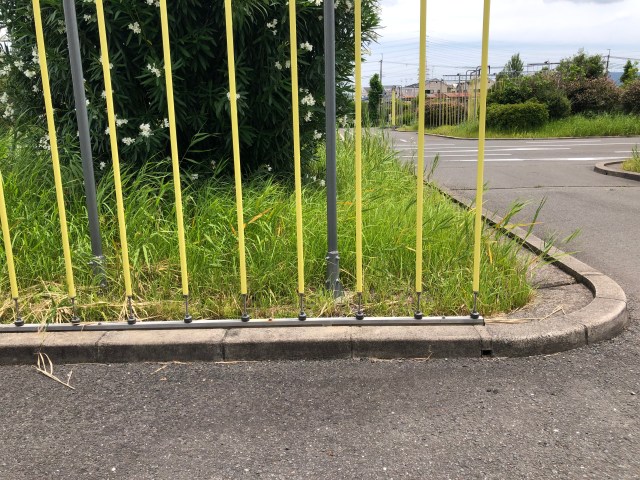
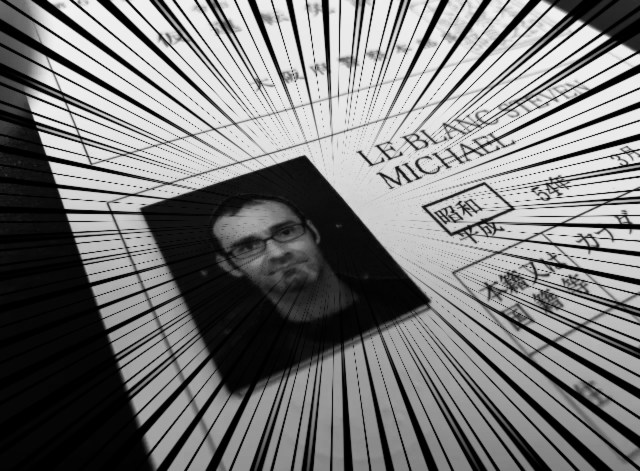
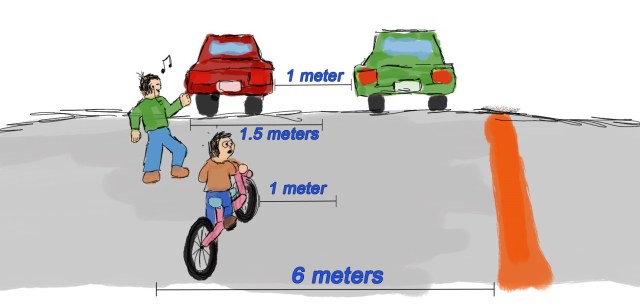
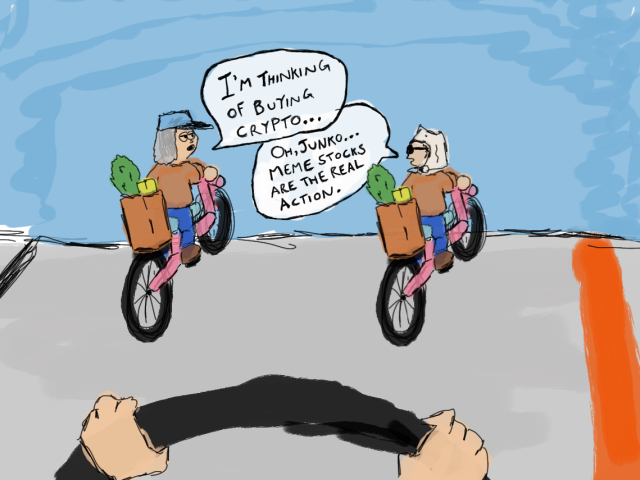
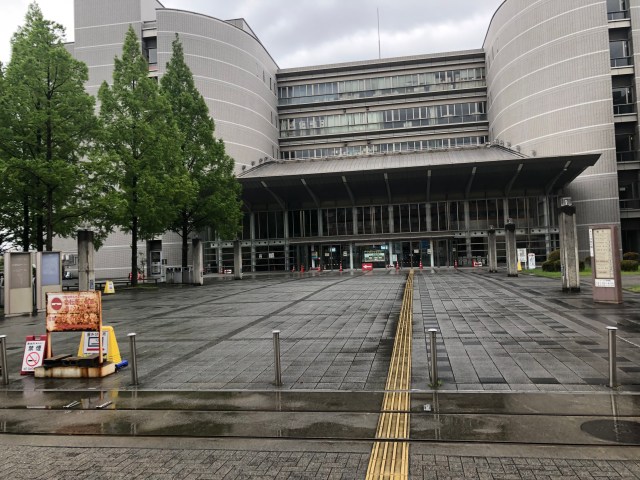
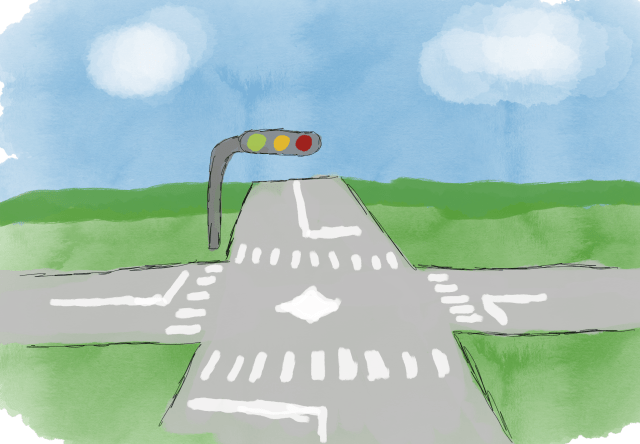
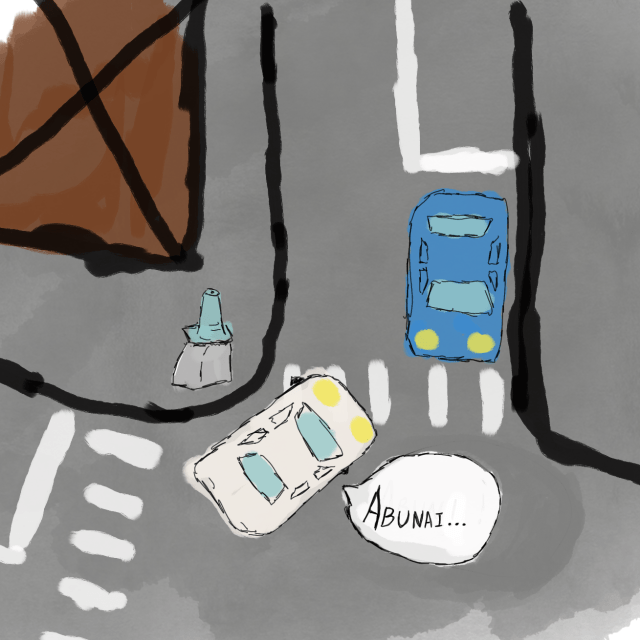
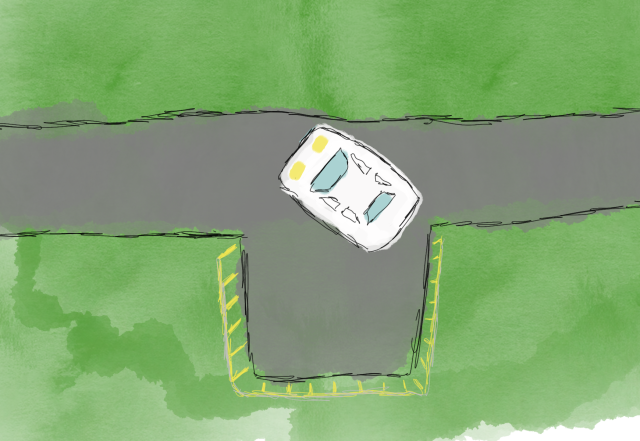
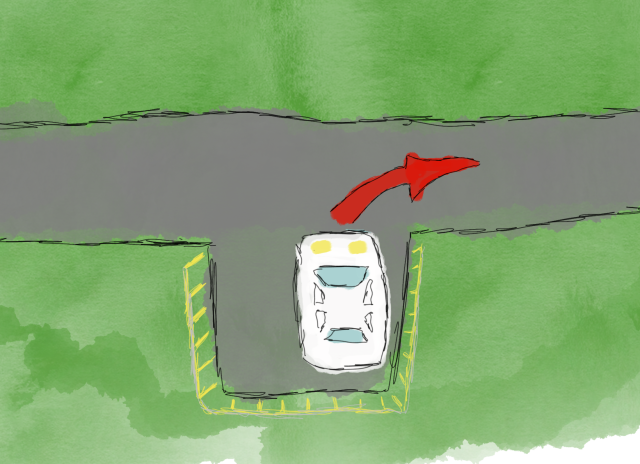
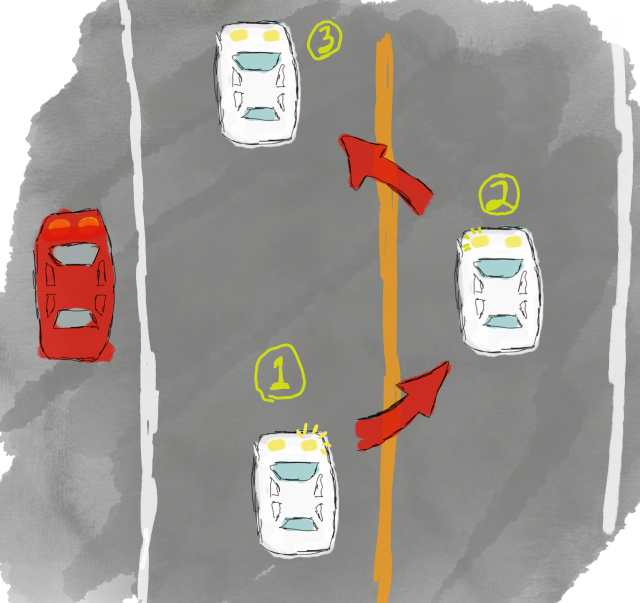
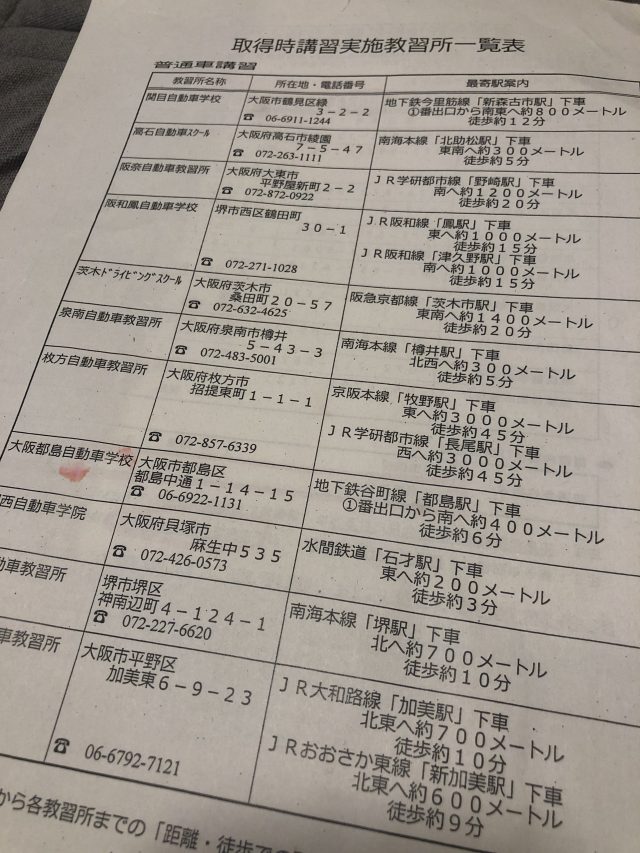

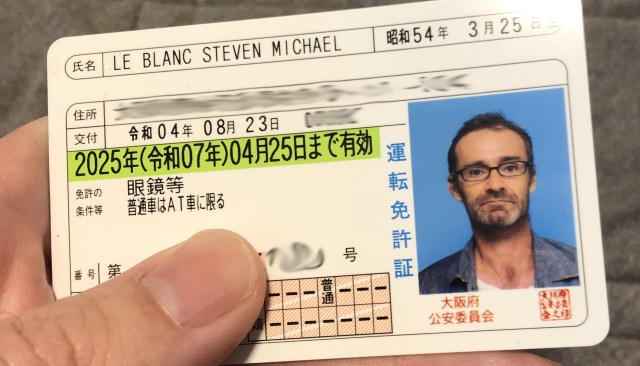
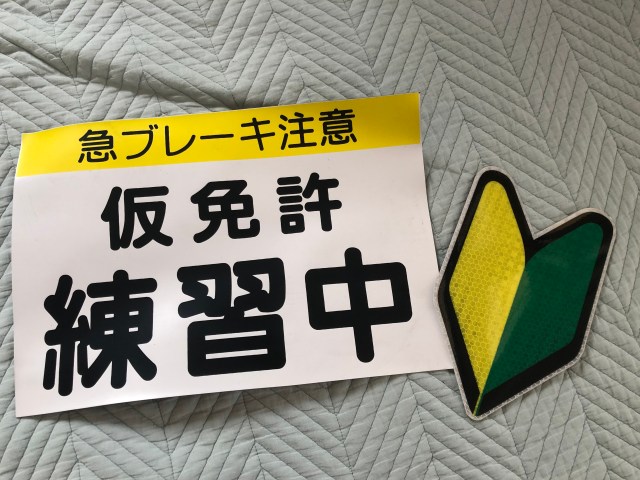
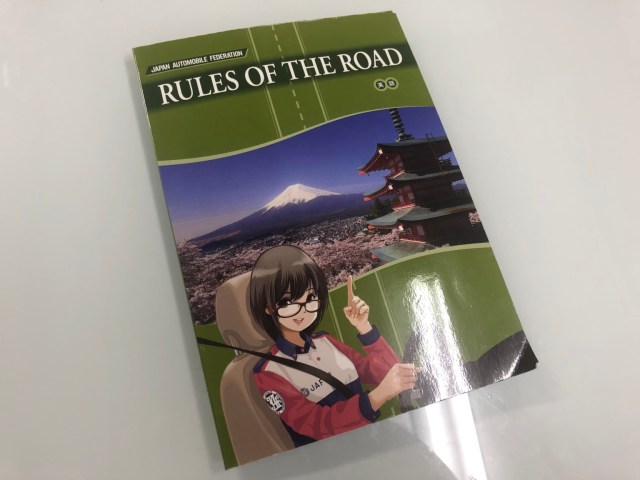
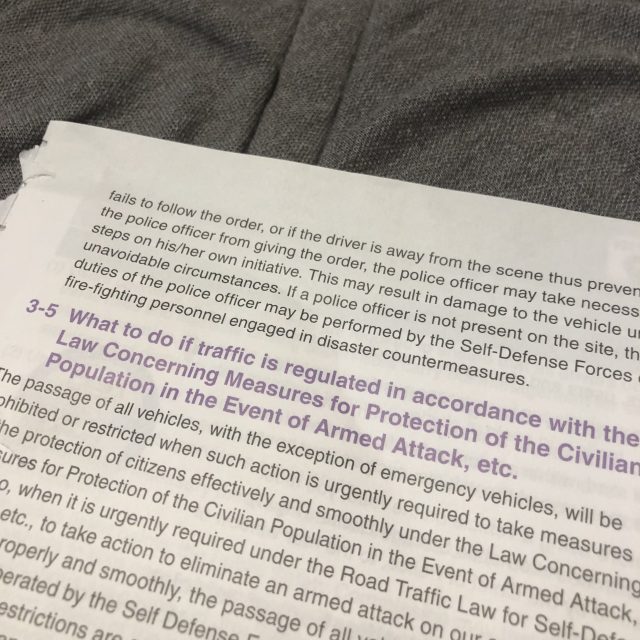
 Getting a driver’s license in Japan the hard way — Part 5: The second written test
Getting a driver’s license in Japan the hard way — Part 5: The second written test Getting a driver’s license in Japan the hard way: The first driving test a few more times
Getting a driver’s license in Japan the hard way: The first driving test a few more times Getting a driver’s license in Japan the hard way: The first written test
Getting a driver’s license in Japan the hard way: The first written test Getting a driver’s license in Japan the hard way: The first driving test
Getting a driver’s license in Japan the hard way: The first driving test Getting a driver’s license in Japan the hard way: The first driving test again
Getting a driver’s license in Japan the hard way: The first driving test again Ramen restaurant’s English menu prices are nearly double its Japanese ones, denies discriminating
Ramen restaurant’s English menu prices are nearly double its Japanese ones, denies discriminating Here’s what our bachelor writers ate over the New Year’s holiday in Japan
Here’s what our bachelor writers ate over the New Year’s holiday in Japan 7 great places to see Mt. Fuji from without having to climb it
7 great places to see Mt. Fuji from without having to climb it 20 Guilt Free Snacks With Only A Hundred Calories
20 Guilt Free Snacks With Only A Hundred Calories Adorable AND delicious — Miffy Toast is the latest Japanese TikTok trend【SoraKitchen】
Adorable AND delicious — Miffy Toast is the latest Japanese TikTok trend【SoraKitchen】 Nearly one in ten young adults living in Japan isn’t ethnically Japanese, statistics show
Nearly one in ten young adults living in Japan isn’t ethnically Japanese, statistics show Studio Ghibli releases new “Butterflies in the Forest” Totoro towels
Studio Ghibli releases new “Butterflies in the Forest” Totoro towels Starbucks releases a Kyoto Matcha Latte in Japan for a limited time
Starbucks releases a Kyoto Matcha Latte in Japan for a limited time New York Asian Film Fest to screen Hentai Kamen 2
New York Asian Film Fest to screen Hentai Kamen 2 What do Japanese People Put in Their Rice Balls? Top 22 Most Popular Onigiri Fillings!
What do Japanese People Put in Their Rice Balls? Top 22 Most Popular Onigiri Fillings! Japanese beef bowl chain Sukiya’s 2026 Smile Box lucky bag basically pays for itself
Japanese beef bowl chain Sukiya’s 2026 Smile Box lucky bag basically pays for itself Starbucks Japan ready to get Year of the Horse started with adorable drinkware and plushies【Pics】
Starbucks Japan ready to get Year of the Horse started with adorable drinkware and plushies【Pics】 Hayao Miyazaki says Happy New Year to Studio Ghibli fans with new art for Year of the Horse
Hayao Miyazaki says Happy New Year to Studio Ghibli fans with new art for Year of the Horse Cup Noodle tries an authentic Jiro-style ramen, but something’s not quite right
Cup Noodle tries an authentic Jiro-style ramen, but something’s not quite right Top Japanese cosplayer Enako returns to Comiket after 6 years, creates mayhem with admirers
Top Japanese cosplayer Enako returns to Comiket after 6 years, creates mayhem with admirers The best Starbucks Japan Frappuccinos we want to drink again in 2026
The best Starbucks Japan Frappuccinos we want to drink again in 2026 We revisited Sweets Paradise after a decade to see if Japan’s dessert buffet still delivers
We revisited Sweets Paradise after a decade to see if Japan’s dessert buffet still delivers That time Seiji called JASRAC to ask why he didn’t get paid royalties for his song being on TV
That time Seiji called JASRAC to ask why he didn’t get paid royalties for his song being on TV Pizza Hut Japan’s hot lucky bags are perfect for a New Year’s pizza party
Pizza Hut Japan’s hot lucky bags are perfect for a New Year’s pizza party Majority of Japanese mayors say foreign residents are essential but most see good and bad effects
Majority of Japanese mayors say foreign residents are essential but most see good and bad effects 7-Eleven Japan starts new temporary luggage storage service in over 300 branches
7-Eleven Japan starts new temporary luggage storage service in over 300 branches Disillusionment at Tsukiji’s tourist-target prices led us to a great ramen restaurant in Tokyo
Disillusionment at Tsukiji’s tourist-target prices led us to a great ramen restaurant in Tokyo Starbucks teams up with 166-year-old Kyoto doll maker for Year of the Horse decorations【Photos】
Starbucks teams up with 166-year-old Kyoto doll maker for Year of the Horse decorations【Photos】 Tokyo considering law requiring more trash cans following litter increase in heavily touristed area
Tokyo considering law requiring more trash cans following litter increase in heavily touristed area Tokyo’s Tsukiji sushi neighborhood asks tour groups to stay away for the rest of the month
Tokyo’s Tsukiji sushi neighborhood asks tour groups to stay away for the rest of the month Tokyo event lets you travel back in time, for free, to celebrate 100 years since Showa era start
Tokyo event lets you travel back in time, for free, to celebrate 100 years since Showa era start Japan may add Japanese language proficiency, lifestyle classes to permanent foreign resident requirements
Japan may add Japanese language proficiency, lifestyle classes to permanent foreign resident requirements Sanrio theme park in Japan announces plans to expand into a Sanrio resort
Sanrio theme park in Japan announces plans to expand into a Sanrio resort Lacquerware supplier to emperor of Japan and Pokémon team up for new tableware
Lacquerware supplier to emperor of Japan and Pokémon team up for new tableware Survey asks foreign tourists what bothered them in Japan, more than half gave same answer
Survey asks foreign tourists what bothered them in Japan, more than half gave same answer Japan’s human washing machines will go on sale to general public, demos to be held in Tokyo
Japan’s human washing machines will go on sale to general public, demos to be held in Tokyo Japan’s deadliest food claims more victims, but why do people keep eating it for New Year’s?
Japan’s deadliest food claims more victims, but why do people keep eating it for New Year’s? We deeply regret going into this tunnel on our walk in the mountains of Japan
We deeply regret going into this tunnel on our walk in the mountains of Japan Studio Ghibli releases Kodama forest spirits from Princess Mononoke to light up your home
Studio Ghibli releases Kodama forest spirits from Princess Mononoke to light up your home Major Japanese hotel chain says reservations via overseas booking sites may not be valid
Major Japanese hotel chain says reservations via overseas booking sites may not be valid Put sesame oil in your coffee? Japanese maker says it’s the best way to start your day【Taste test】
Put sesame oil in your coffee? Japanese maker says it’s the best way to start your day【Taste test】 No more using real katana for tourism activities, Japan’s National Police Agency says
No more using real katana for tourism activities, Japan’s National Police Agency says Starbucks Japan reveals new sakura drinkware collection, inspired by evening cherry blossoms
Starbucks Japan reveals new sakura drinkware collection, inspired by evening cherry blossoms Updated cherry blossom forecast shows extra-long sakura season for Japan this year
Updated cherry blossom forecast shows extra-long sakura season for Japan this year Japan to make foreign driver’s license conversions more difficult, exclude tourists from eligibility
Japan to make foreign driver’s license conversions more difficult, exclude tourists from eligibility Foreign driver’s license conversion test passes plummet from over 90% to 33% in Japan
Foreign driver’s license conversion test passes plummet from over 90% to 33% in Japan Japan government mulling more restrictions on foreign driver’s license conversions
Japan government mulling more restrictions on foreign driver’s license conversions Chinese drivers flocking to Japan for quick and easy route to international licenses
Chinese drivers flocking to Japan for quick and easy route to international licenses Drunk cycling can result in an instantly suspended driver’s license in Japan
Drunk cycling can result in an instantly suspended driver’s license in Japan Driver’s licenses? More and more Japanese youths don’t need no stinkin’ licenses
Driver’s licenses? More and more Japanese youths don’t need no stinkin’ licenses Foreign street kart driver crashes into taxi after ignoring road sign in Tokyo
Foreign street kart driver crashes into taxi after ignoring road sign in Tokyo Elderly motorists in Japan given option to “graduate from driving” to prevent accidents
Elderly motorists in Japan given option to “graduate from driving” to prevent accidents Japanese driving pet peeves: Not so different from other countries!
Japanese driving pet peeves: Not so different from other countries! People in some parts of Japan now legally allowed to smile for their driver’s license photos
People in some parts of Japan now legally allowed to smile for their driver’s license photos 82-year-old Japanese man arrested for driving without license, says he had one 60 years ago
82-year-old Japanese man arrested for driving without license, says he had one 60 years ago Aichi Police: Surrender your driver’s license and get up to $1 off at McDonald’s!
Aichi Police: Surrender your driver’s license and get up to $1 off at McDonald’s! Handsome Japanese cosplayer finds renewing driver’s license hard after huge transformation【Pics】
Handsome Japanese cosplayer finds renewing driver’s license hard after huge transformation【Pics】 Elderly woman drives at speed on sidewalk in Japan 【Video】
Elderly woman drives at speed on sidewalk in Japan 【Video】 What ticks off drivers in Japan? New survey reveals the top three causes of road rage
What ticks off drivers in Japan? New survey reveals the top three causes of road rage
Leave a Reply